The Ultimate 3-5 Day Backpacking Packing List for 2025 (PLUS Backpacking Checklist PDF)
Every single time I get ready for a backpacking trip I HAVE to look at my printed out backpacking packing list to make sure I didn’t leave anything behind! You’d think that after years of practice I’d be good at just packing from memory, but you’d be surprised how often my mind fails me (👋 over-active mind here!).
Even though I’ve been backpacking for many years now, I never seem to fail to leave something out when I’m laying gear out to get ready. So now I just don’t risk forgetting something by using my backpacking checklist, and I recommend that you do the same.
Always get in the habit of reviewing your backpacking gear checklist before you head out on a trip! I personally like to do this at least a few days in advance, just in case I need to go to the store to grab some extra things (like batteries, sunscreen, snacks, wipes… you know…).
This post will give you a couple of useful resources to help you pack for your next backpacking trip.
First, I’ve created a Backpacking Checklist PDF that you can download and print out for your reference. It includes everything I cover in this post but in a nice condensed checklist, and it’s the ultimate backpacking gear list…if I do say so myself! I used to have this gear list written on a back of some notebook paper, but thanks to this blog, I made it nice, pretty and organized. Because you’re worth it. 😉
Second, in this blog post, I will take each of my backpacking gear checklist items and give you my personal recommendations for the gear I love using myself. Basically, this post is a look at my backpacking gear closet… my backpacking must-haves, so to speak.
If you ever find yourself thinking, “What gear would Allison of She Dreams of Alpine bring backpacking?" (and I’m just going to pretend that you think that all the time), then this is the post for you, friend! It’s also totally OK if you are thinking, “I don’t know who this She Dreams of Alpine chick is, but I would like someone to give me overnight backpacking list gear recommendations!” I’ve got you covered, too.
DOWNLOAD THE BACKPACKING CHECKLIST PDF BELOW
Before you go through the post to get a glimpse at the gear I recommend for each category of backpacking items, you should download and print off my backpacking checklist for quick reference for your future backpacking trips.
Just keep it close to your gear, and then you’ll always have it handy to review when packing for a trip. My backpacking checklist is a full detailed list of what you should consider bringing with you on any backpacking trip (particularly trips in the 3-5 day range).
I also include a few extras for you - this download includes not only the backpacking packing list, but also a tip sheet on layering outdoors and 25+ backpacking food ideas!
DON’T FORGET! Leave No Trace (LNT): I also want to make a quick reminder here to always Leave No Trace when backpacking. This is well-known knowledge to my backpacking enthusiast friends here, but many of you may be newer to backpacking and might not be aware of the best practices when backpacking outdoors.
The big thing to remember and practice with LNT is to always be sure that whatever you pack in with you also ALWAYS PACK OUT. If you bring toilet paper with you, you pack your dirty toilet paper out with you (yep, use a ziplock!).
There are also some other key rules about where to camp, and where to leave your human waste, so be sure to check out the LNT website for more details if you don’t know the 7 principles.
NEW TO BACKPACKING?
Also, if you ARE new to backpacking, and are feeling overwhelmed a bit by ALL THE THINGS, I highly recommend you check out my backpacking program.
Join me (and your peers) on a transformational adventure, where you will learn how to confidently go on your first ever (or perhaps your first solo) outdoor backpacking trip without the constant fear of getting lost, the debilitating worry of being unprepared, and the lurking feeling that you lack the "know-how" and skills required to stay safe on the trails. Click here to be the first to know when my one-of-a-kind backpacking program re-opens again for enrollment!,
Alright, let’s get on with the backpacking checklist, shall we?
My Complete Backpacking Packing List
Here’s my ultimate list of what to pack for backpacking. The list is broken down into the same categories as my backpacking checklist PDF. This gear list is most applicable for 3-day backpacking trips and up to 5-day backpacking trips (and obviously this list will work for 2-day trips as well).
This list isn’t fully optimized for really long thru-hiking trips though, since that takes a LOT more planning and coordinating, and your gear strategy will be a bit different. However, most of the gear items will still apply.
This backpacking gear list usually brings me in at around 25-30 lbs with the gear that I own.
Note: This list contains affiliate links.
The Backpacking Essentials
The backpacking essentials are some of the core items (and often the heaviest items) you’ll have in your backpack. When starting out you might feel like you can’t afford all of these big-ticket items, so I just want to say it’s totally ok to start with cheaper gear and work your way to a more optimized (and light-weight) kit as you grow as a backpacker.
Just keep in mind that splurging a bit for these pieces will make the biggest overall dent in your backpacking pack weight. It’s pretty incredible how lightweight gear has gotten these days! And friends, it really is worth the price tag.
PLUS, all the stuff I have spent more money on has lasted me 10x times longer than the cheaper items. (Definitely look into the benefits of REI membership to help save some money on your big purchases.)
But just start where you are, and don’t stress out too much. You can make it work with whatever gear you can get!
Another great backpack option is the Granite Gear Blaze 60L, which is a lightweight pack that is super adjustable. I got this pack for our JMT thru-hike, and it was fantastic during several weeks on the trail!
We love Big Agnes down bags, but don’t be afraid to shop around! The key here is to look for a down bag. They are warmer, weigh less, and compress down more. Check out Steep & Cheap or REI Outlet for good deals!
Looking for more information about the backpacking essentials? Check out these resources on my site:
Backpacking for Beginners: 15 Rookie Mistakes To Avoid Your First Time Backpacking
Gear Review: Field Testing the PackPillow Backpacking Pillow
Backpacking Navigational Gear
Navigational gear is one of the most important backpacking necessities, in my opinion. I believe every single person who hits the trails should be responsible for themselves and know how to navigate outdoors. Here’s a look at the backpacking navigational gear I personally love and recommend.
Gaia is offering a special 10% discount to anyone who subscribes through my link above. But even if you don’t use my link, please, get yourself a GPS phone app to help you navigate outdoors!
I own the Garmin inReach Mini now and pair it with my Garmin 64st, but you can save weight by getting an all-in-one solution.
GRAB MY [FREE] OUTDOOR BACKPACKER STARTER KIT
I created the Ultimate Outdoor Backpacker Starter Kit for you (and it's FREE)! This starter kit is filled with 14 pages of my best hiking and backpacking tips to help you learn what it takes to become a safe, confident, and self-sufficient outdoor backpacker!
Water Necessities
I made water its own category because water equals life. So I would say it’s pretty important! That’s why you MUST make sure you have the right backpacking gear to meet your water needs (and water treatment needs) on the trail.
You could also opt for a Sawyer Squeeze, which is more affordable! I also have become a huge fan of the Katadyn Be Free, and it is often my go-to. There are pros and cons for each of the different options.
Backpacking Kitchen Essentials
Another key piece of your backpack camping checklist is kitchen essentials. You need to eat on the trail – a lot more than you normally do when you’re not hiking for miles a day – so you need the camp kitchen gear to make your food.
Note: if you decide to go stoveless on your backpacking trip (which is becoming more and more popular these days), you won’t need to bring some of the backpacking gear items below with you.
You could also go stoveless depending on what foods you bring. If you bring a stove, make sure to bring a lighter or matches with you as well, even if your stove has an igniter button (since those buttons can be unreliable).
Backpacking Safety & Emergency Gear
When you are wondering what to pack for backpacking, safety and emergency gear should be at the top of your list. Here’s a look at what I always bring with me to help me feel safe in a variety of situations.
I believe this is a super important piece of gear you should really invest in for yourself when you can. Having a satellite communicator could potentially save your life one day, and that is worth the money, my friend.
Also, it’s really nice to be able to shoot my family messages like “Hello I’m at camp now,” or “Starting my day” even when I’m deep in the backcountry. There are a lot of brands out there, but I really love my Garmin devices. But feel free to do your research - it’s a big purchase!
For instance, the parks that maintain a big portion of the Sierra Nevada in California require that you have a bear canister when staying overnight in the backcountry, but they do not allow bear spray. Know your area before you go.
Miscellaneous Gear
These are the items we often forget when packing for our backpacking trip, but they are still super important! You could definitely have a rough day if you forget any of these things.
Backcountry Toiletries
Another crucial piece of your must-have backpacking gear is your backcountry toiletry kit! I usually like to put all of my toiletry backpacking items inside of a lightweight stuff sack for easy grab-and-go when needed.
Looking for more information about the backpacking hygiene? Check out these resources on my site:
Clothing
Inside of my Backpacking Checklist PDF, I included a Layering 101 cheatsheet that goes a little more in-depth on layering essentials. Learning to layer properly in the outdoors is an essential skill, and you’ll discover this as you go on more trips. Below are some of the basics though to consider bringing with you., and also check out my full What to Wear Hiking post for more info on choosing hiking clothes.
Also, as you go through my backpacking clothing list below, you might start to notice that many of my recommendations are from the Patagonia brand (which I know is expensive). But I truly love this brand, and think they make some of the very best backpacking clothing and gear.
The quality of Patagonia clothing is fantastic, the gear is built to last (and they will repair it!), the company has excellent values – not only with the product they are creating, but also with their customers – and their gear was built with the outdoorsperson in mind. So I’m a big fan! Most of my Patagonia gear is going on 7+ years strong still, so you also get a lot of value out of it.
>>> Check out all our recommendations for the best hiking underwear here!
DON’T FORGET! DOWNLOAD A PRINTABLE VERSION OF THE ABOVE BACKPACKING PACKING LIST BELOW:
Have any other favorite essential backpacking gear items you recommend and want to share with others? Let me know what you LOVE in the comments below, and why gear you consider a must-have!
more backpacking resources
Looking for even more backpacking tips? Check out these articles on the site!
Essential Backpacking Hygiene Tips & Feminine Care in the Outdoors
What to Wear Hiking – The Ultimate Guide to the Best Hiking Clothes
7 Tips to Hiking and Summiting Your First Fourteener Mountain
10 Awesome Hiking Groups and Challenges to Encourage You on Your Hiking Adventures
Cheers,
Allison - She Dreams of Alpine


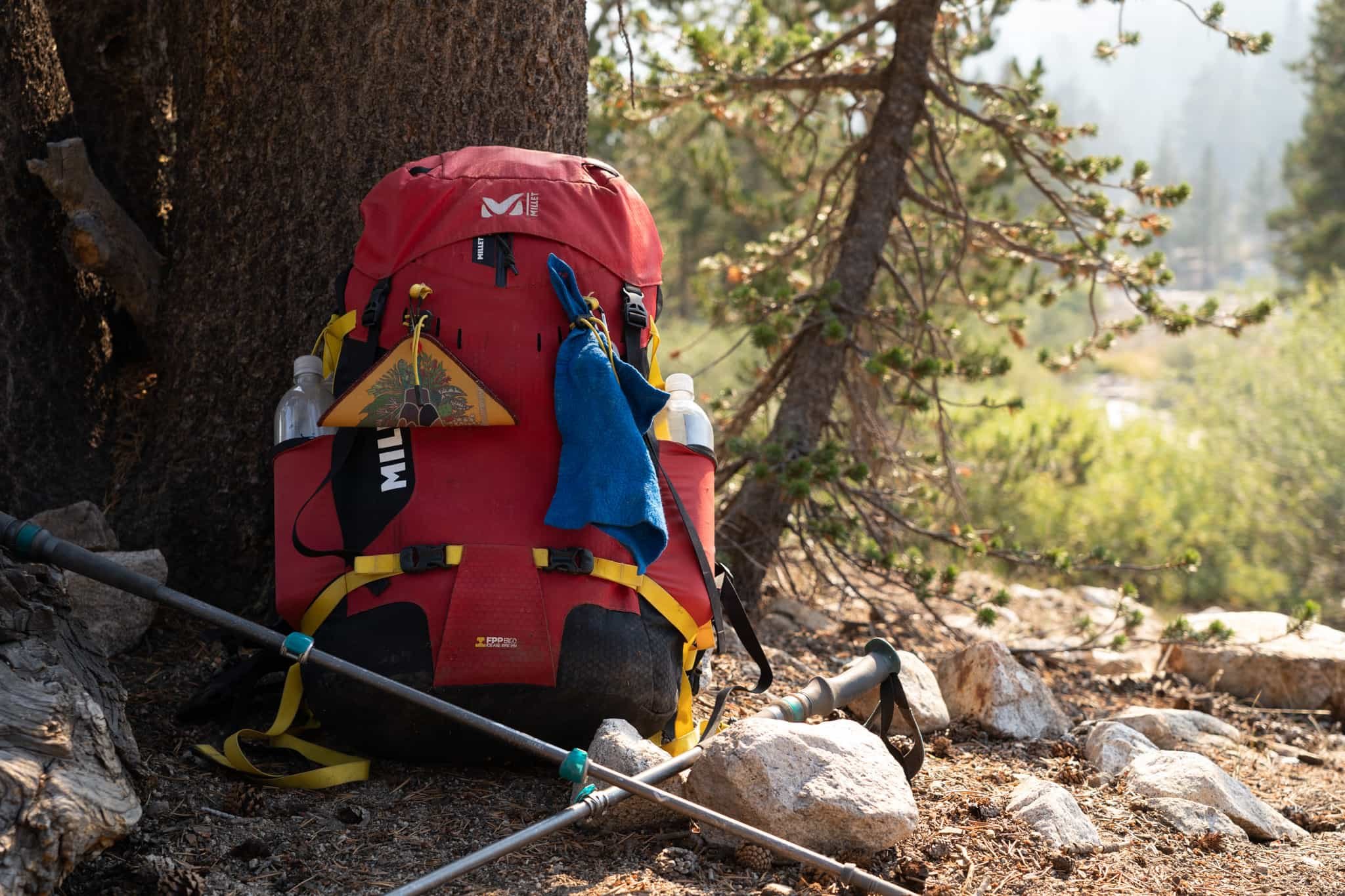
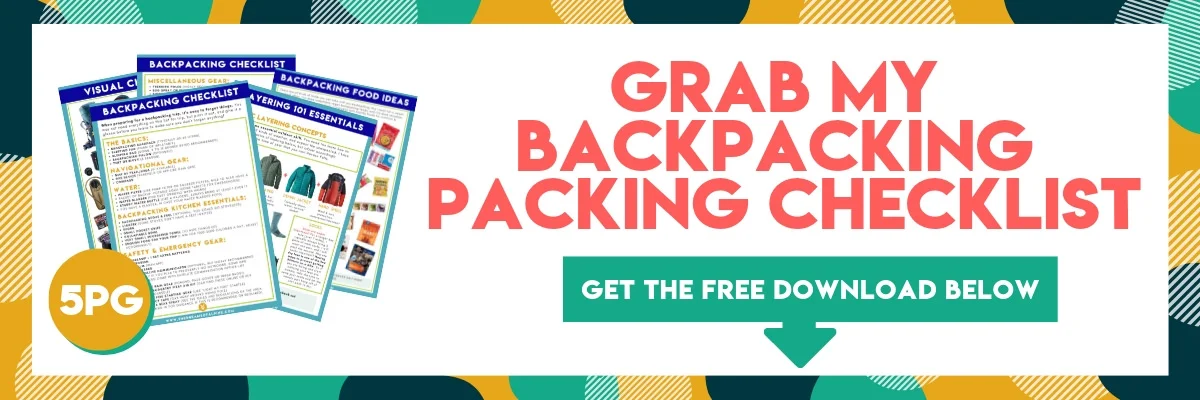
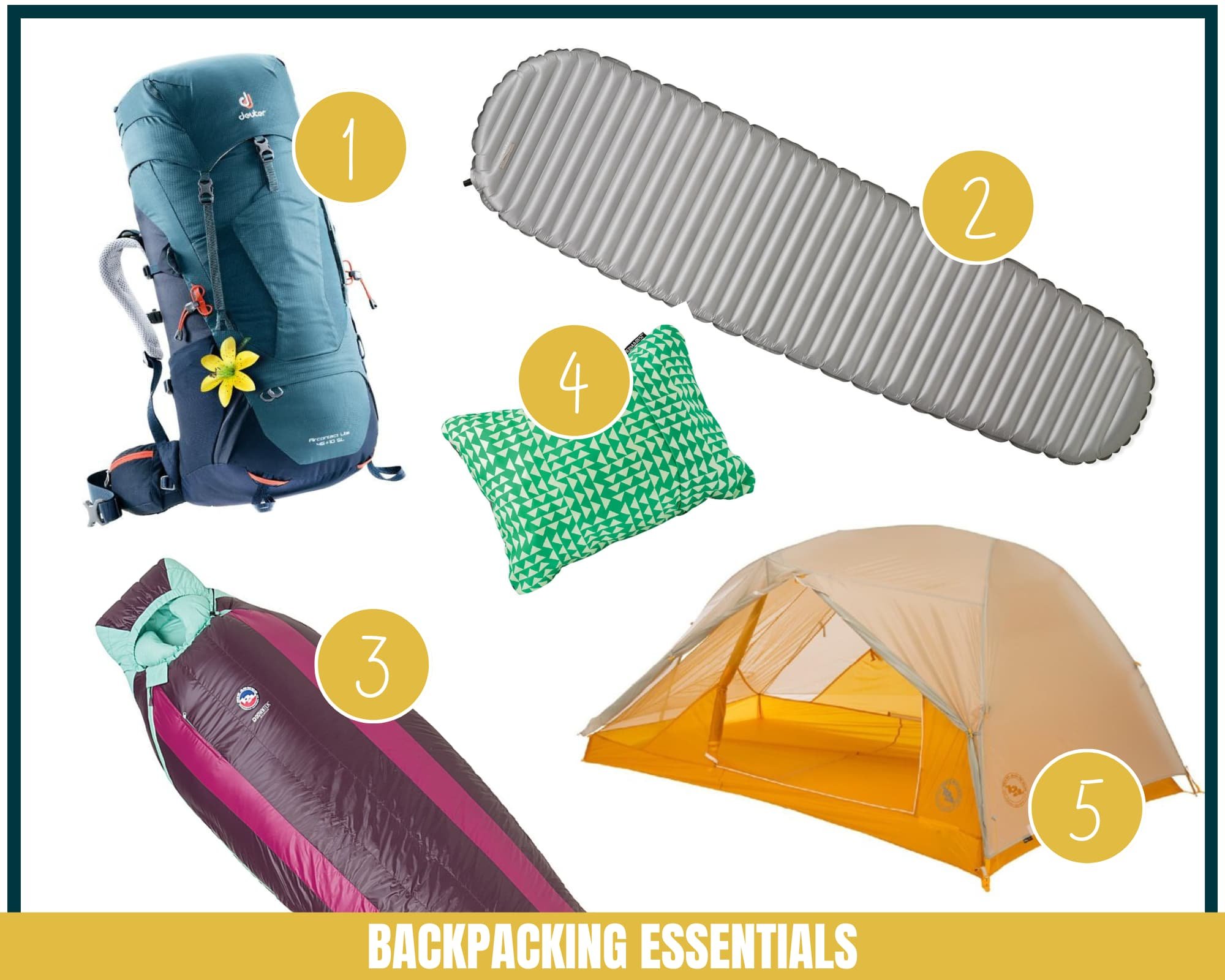
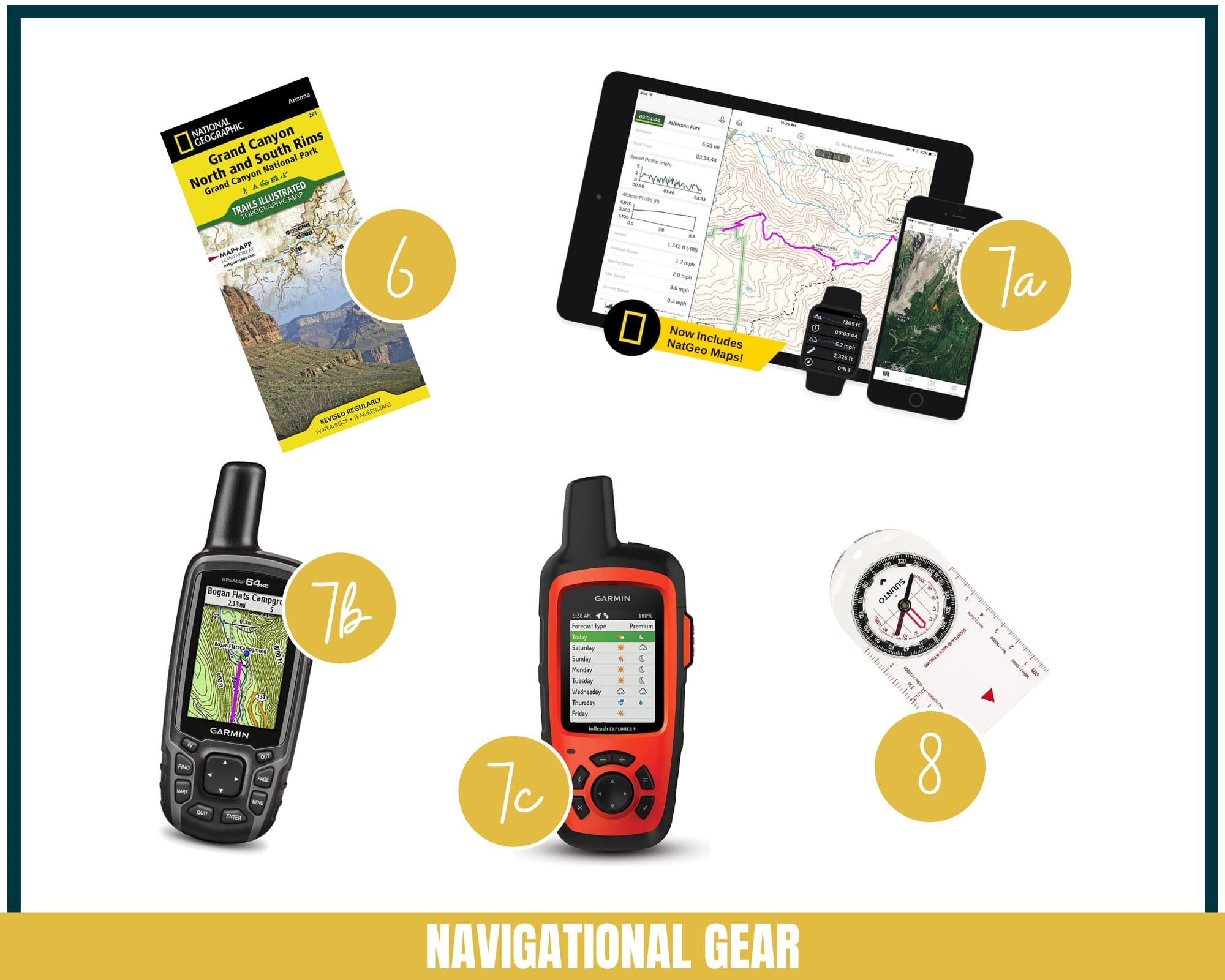
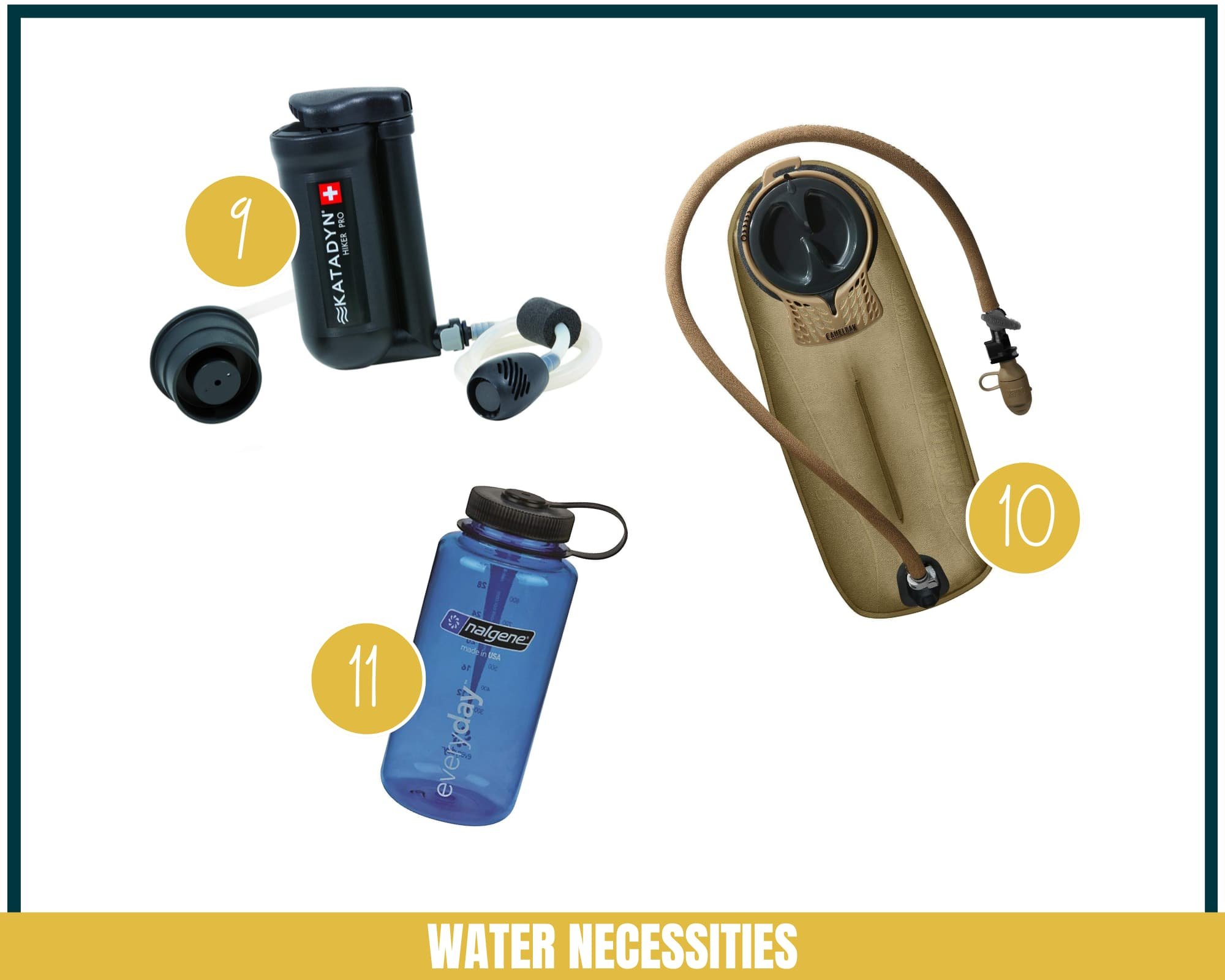


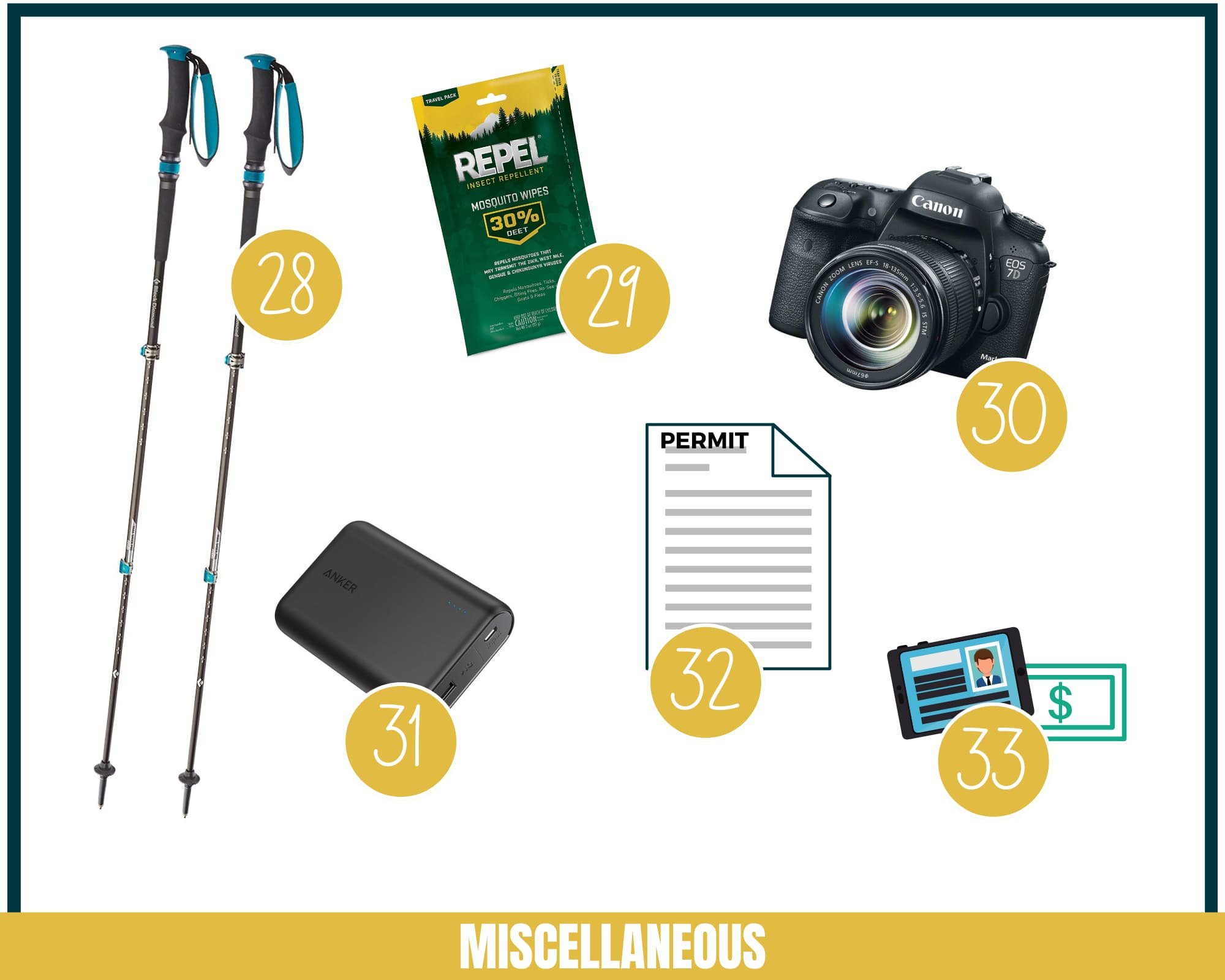
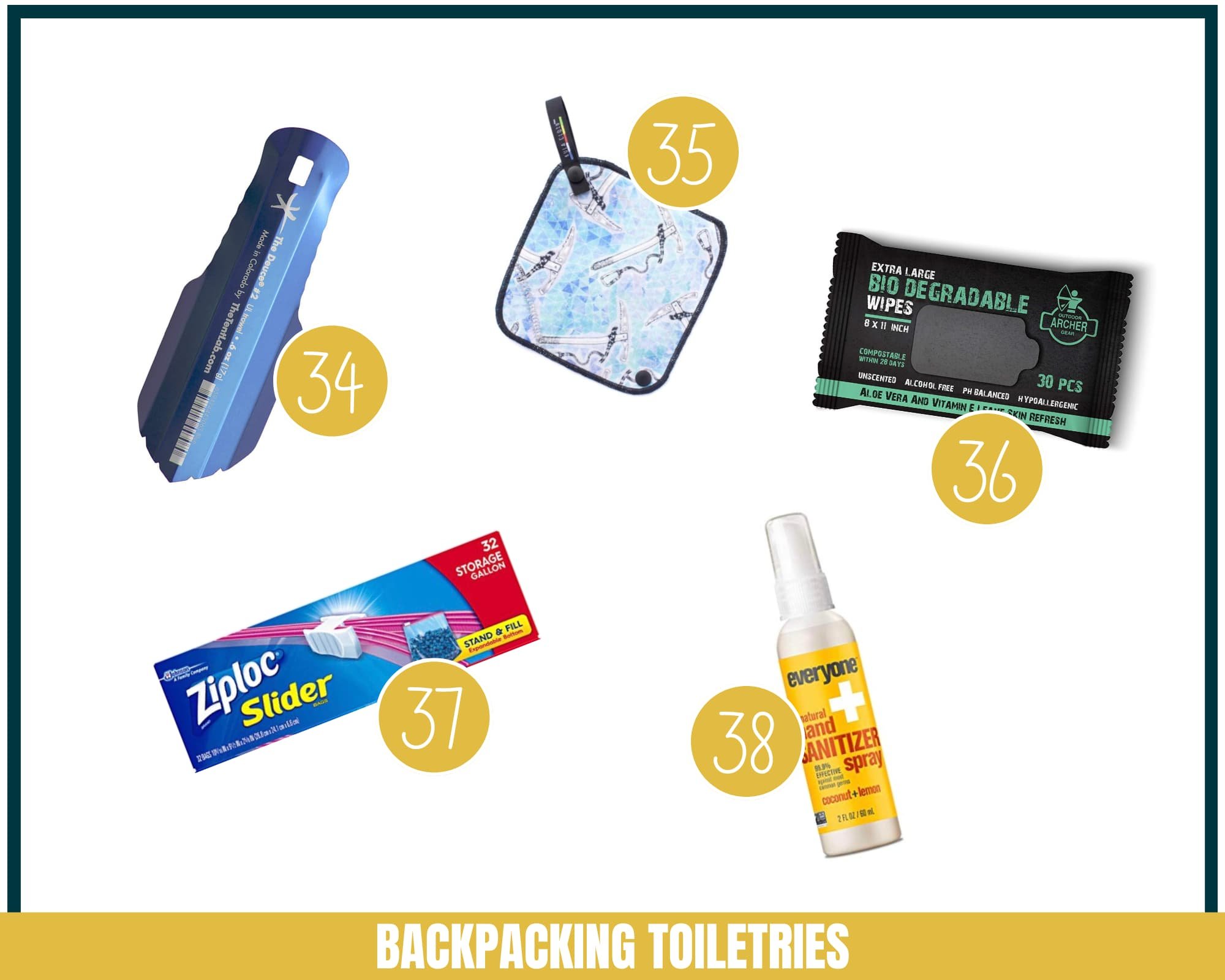

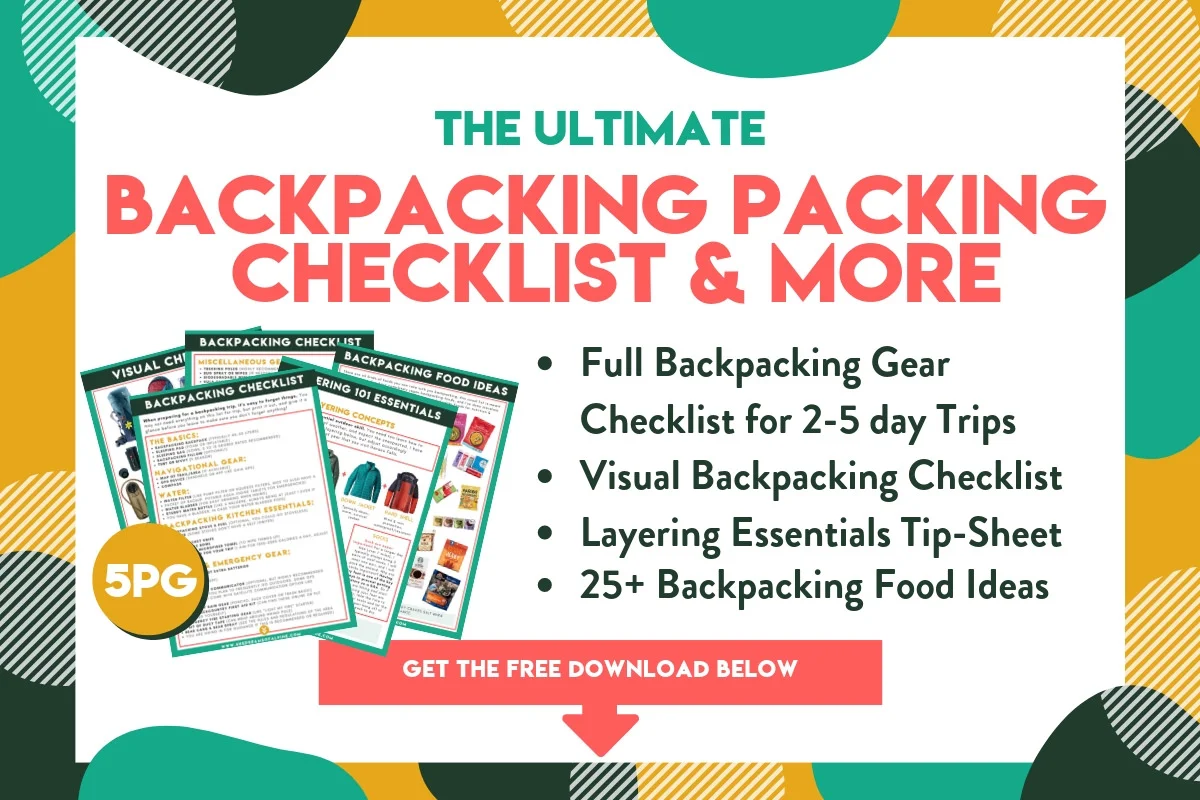
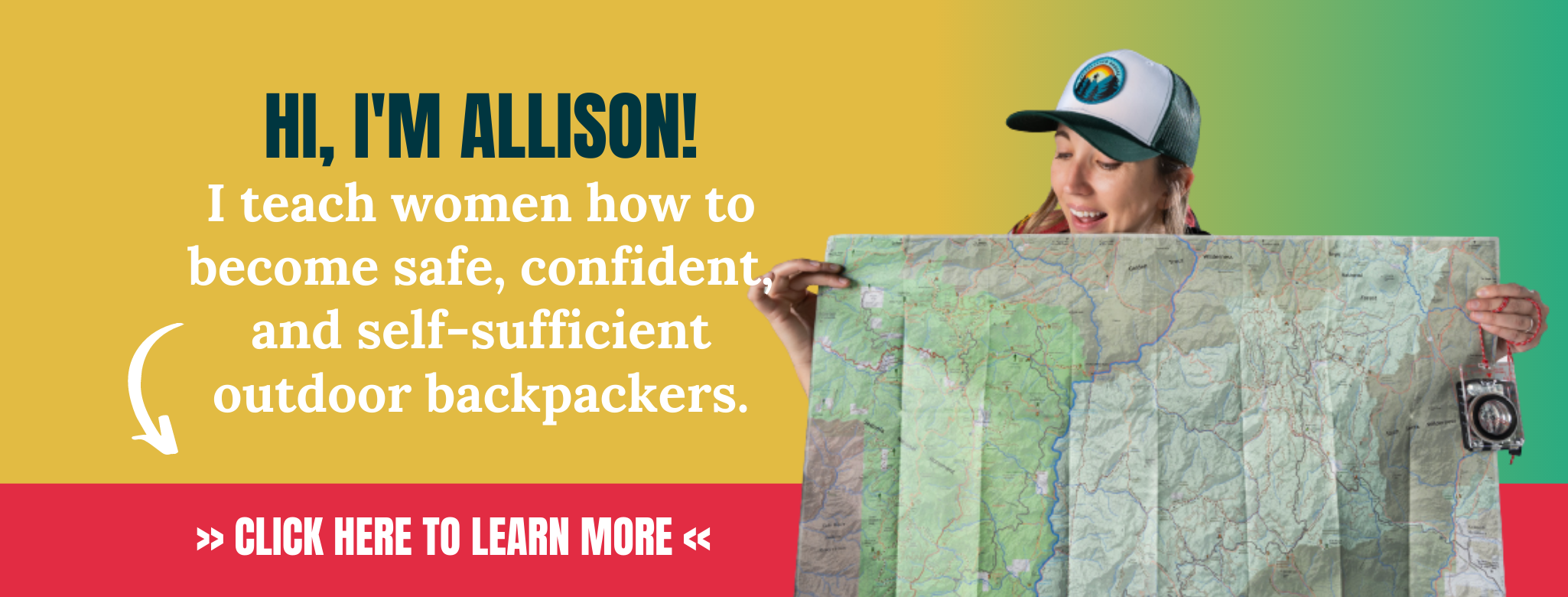

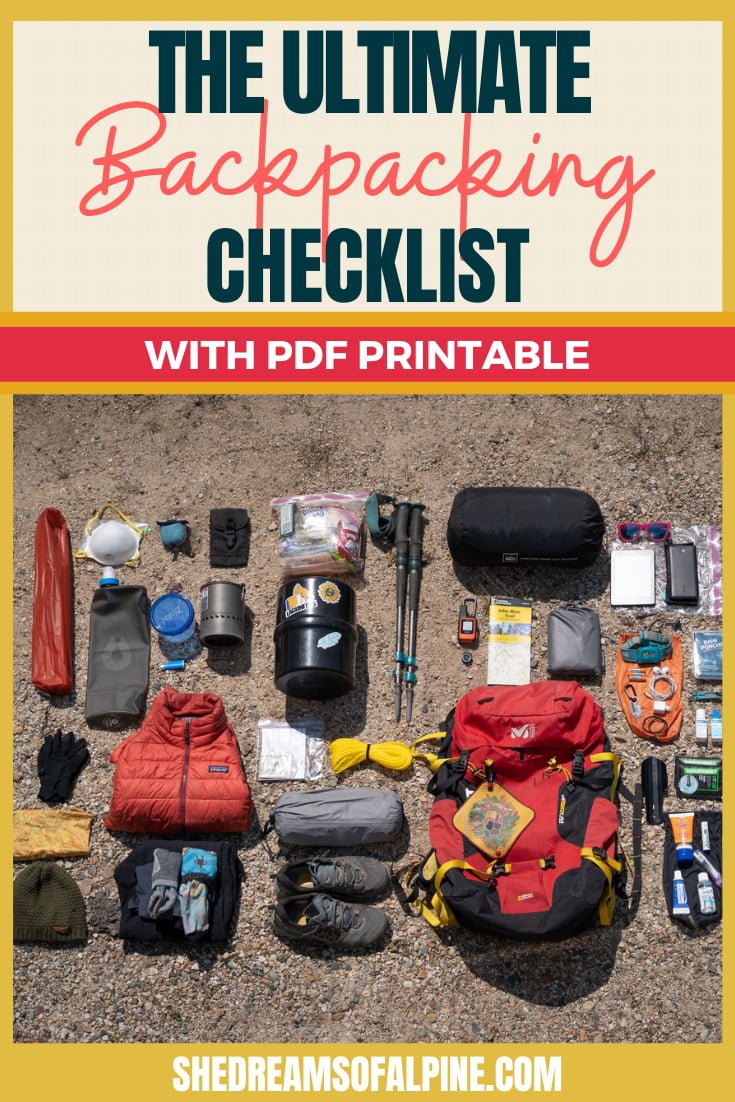







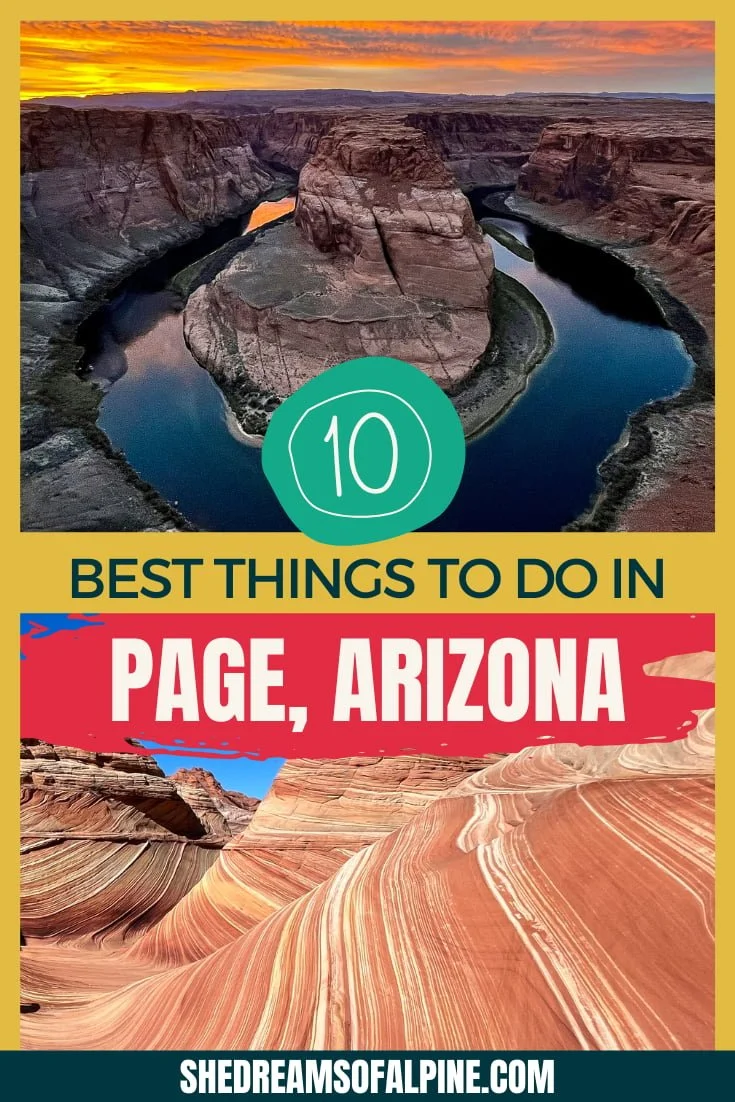
Important Permit & Reservation Deadlines for Popular California Hiking Trails & Campsites | Don't miss out on hiking or camping at some of Californias most popular sites because you missed the reservation deadlines. In this post I've outlined key deadlines to mark your calendars with for some of Californias most iconic locations such as Yosemite Wilderness Permits, Inyo National Forest Permits, Mount Whitney Permits, Half Dome Permits, JMT Permits, Joshua Tree camping reservations, Lost Coast backpacking permits and much, much more!. | shedreamsofalpine.com